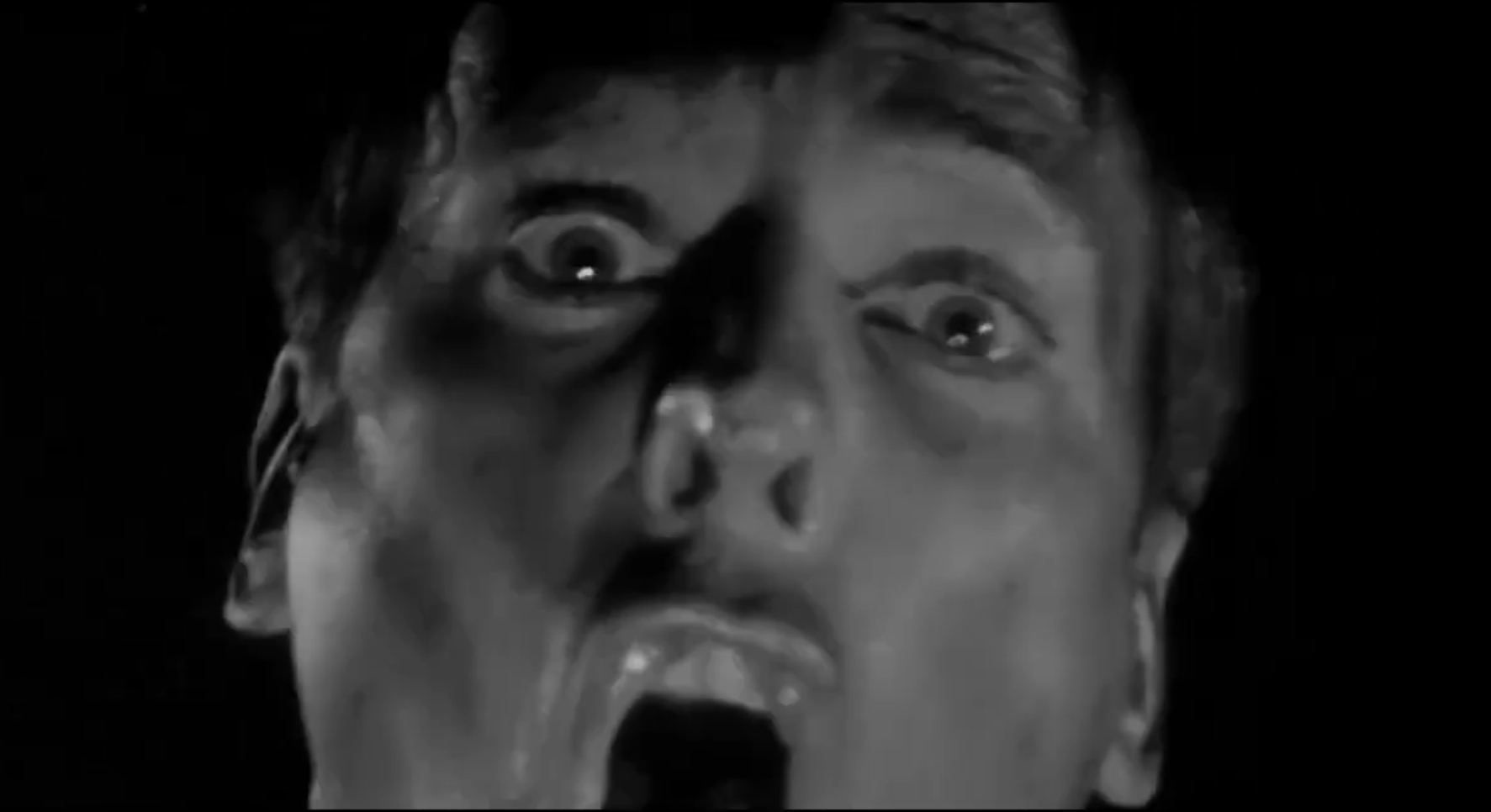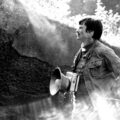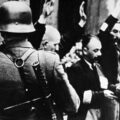During the second half of the 20th century, Cold War anxiety and paranoia played out on America’s silver screens via the explosively popular horror genre. These films both reflected and shaped how Americans understood the perceived threats of a rapidly changing world. This paper examines five horror films—Them! (1954), Invasion of the Body Snatchers (1956), Night of the Living Dead (1968), The Crazies (1973), and Red Dawn (1984)—which were popular upon release and have since become cult classics. Spanning the height of the Cold War, each film can be thought of as an evolving representative of a “Cold War horror” subgenre. Each film addresses major tensions of the era: fear of the unknown fueled by accelerating technological advancement; fear of foreign influence, often portrayed as an unseen yet powerful force and/or as monsters within the community; and, perhaps most strikingly, a growing distrust of government authorities. Through these films, we trace a shift in public perception—from not fearing just external threats but also gradually adding internal suspicion of the very institutions tasked with protecting the nation from those threats.
THEM (1954)
Them! premiered across the US on June 19, 1954. It tells the story of mysterious deaths in New Mexico that lead FBI agents to discover the existence of giant ant-creatures. These monsters, mutated by radiation created by America’s first atomic bomb test in 1945, grew to deadly proportions. With the assistance of the Air Force, the ants’ large, complex underground tunnels are burned and gassed—however, two new queens are discovered to have hatched. One has created a new nest in the storm drains of unsuspecting Los Angeles. The other has infiltrated a ship traveling from Mexico to Singapore. The protagonists manage to subdue both queens, but are left with anxiety about the unpredictability of life in the new atomic age.[1]
As part of the film’s marketing campaign, regional collaborations were held with the Federal Civil Defense Administration (FCDA), an organization established by President Truman in 1950. With WWII only recently ended and the Cold War just beginning, the administration sought to promote and facilitate American civil defense via cooperation between the federal and state authorities.[2] The FCDA opened recruiting booths in theaters showing THEM! as part of its efforts to recruit volunteers. Moviegoers at over 2,000 locations received flyers asking them, “What would you do if [name of your city] were attacked by THEM? Prepare for any danger by enlisting in Civil Defense now.”[3] The Warner Bros. pressbook for the film was filled with other marketing materials, including “THEM Fighter” children’s armbands and recommendations to create accompanying exhibitions of “a sub-machine gun, bazooka, flamethrower and grenade rifle” loaned from local armories with a sign reading “THESE WEAPONS WERE NO MATCH FOR ‘THEM!’”[4]
THEM! depicts an America under siege, by an enemy unknown and unseen by its victims until it was too late. The nuclear power that had mutated the giant ants had been developed by the US but, by the time Them! premiered, was also in the hands of the Soviets.[5] The nature of the Cold War and its atomic threat was new and the memory of its devastating impacts was still fresh. The film gives this uncertainty and trauma a physical manifestation in the form of its unpredictable, unknowably dangerous monsters.
Just one year before the film’s premiere, almost to the day, Ethel and Julius Rosenberg were executed for conspiracy to commit espionage, betraying atomic secrets to the USSR.[6] Its premier happened just two days after the last televised McCarthy hearing, the height of the 1950’s “Red Scare.” The sensational trials and hearings added fuel to fears of undercover Communist agents lurking just below the surface of American communities. This anxiety plays out plainly in the film, with the mutated ants quite literally nesting below our feet. Although communism is not directly mentioned, the “invasion” depicted, in historical context, reflects an American public preparing to fight what many would come to think of as America’s most dangerous enemy to date—Communism.
The fallout from the McCarthy hearings had only just begun when THEM! premiered. The government’s image would be bruised and McCarthy himself forced from office for prosecuting his innocent countrymen for the sake of advancing his own power. However, in this case, the evil was understood to be contained in the personality of McCarthy and he was stopped by better forces within the government. Thus, the government in Them! still plays the role of unmitigated savior—a competent, scientifically-informed force that neutralizes the threat against its people.
Aside from Communism, radiation was also tightly associated with Cold War competition, a source of social anxiety, and the subject of many horror films throughout the Cold War. The Beast from 20,000 Fathoms (1953), depicts a massive prehistoric creature awakened by atomic testing. Godzilla (released in the US in 1956) features a sea beast mutated by radiation and able to crush whole cities. Much later, The Hills Have Eyes (1977) depicts people twisted into beasts by the same radiation in the same desert that created THEM! All these movies also depict the fear of being “infiltrated” by a foreign force. As Cold War fears developed, this cinematographic trope would evolve a more directly ideological and human-oriented focus.
Invasion of the Body Snatchers (1956)
Directed by Don Siegel in 1956, Invasion of the Body Snatchers follows Dr. Miles Bennell as he discovers that his entire town is being replaced with alien “pod people.” The pods, grown in nearby farmland from spores arrived from outer space, grow a copy of any sleeping person near to them. The copies are virtually indistinguishable from those they replace, have most of the same memories, but lack human emotion and individuality. They become part of a collective, emotionless society bent only on expanding itself with more pods. The body of the victims disintegrate as the copies are made.
Dr. Bennell barely manages to escape the horde only to find that no one believes him, as he frantically tries to explain the extraordinary event that is occurring. Arrested and taken to a psychiatric hospital, he looks directly into the camera and screams “You’re next!” However, Bennell’s message to the FBI is eventually confirmed when a truck carrying pods to what was to be the second infected town overturns. We are left with hope that there may still be time to stop the alien takeover.[7]
Invasion of the Body Snatchers premiered just two years after the end of the McCarthy era’s aggressive and abusive show trials. Further, the space race, which would become another major vector of competition in the Cold War, was just beginning. Several films in the 1950s focus on the potential dangers of space, a vast and unknown new scientific frontier.
Invasion of the Body Snatchers zeroes in on this fear of the unknown while playing on developing stereotypes of communists; the alien pod people are a thoughtless, emotionless collective bent on making everyone exactly like them, destroying freedom and individualism. That the pod people were not giant, mutated monsters, but in fact look exactly like our friends, neighbors, and loved ones was one of the most frightening aspects of the film. The McCarthy hearings sought to show that even beloved entertainers and politicians could be taken by communist thought. American propaganda of the time still encouraged people to be vigilant, to watch their neighbors, coworkers, and even family for signs of communist leanings. Communism seemed to be a force that could take anyone at any time, much like an alien pod.
By extension, this fear also stems from a lack of agency, of being unable to control the situation one is in. Americans were already feeling this acutely while living under the constant perceived threat of nuclear war. American school children were being taught to hide under their desks in preparation for a nuclear bomb and many American cities and towns had regular air raid siren drills. And yet everyday people understood that their actions had no practical effect on whether or not either side mobilized their atomic bombs against the other.
This looming threat in combination with a population functionally powerless to stop it meant that individuality, agency, and selfhood were subjects American filmmakers translated to film. Within the horror genre, Invasion of the Body Snatchers is a clear and compelling example of this collective fear. Dr. Bennell, an educated and cultured man, is reduced to a screaming psychiatric patient, fighting desperately for survival. Put in a position to be nothing more than pawns in the game of atom bombs, no sense of American idealism, like that seen in Bennell’s apparently idyllic American community, could save U.S. citizens from invasion. It needn’t matter if this invasion came in the form of aliens, communist ideology, or nuclear catastrophe.
Night of the Living Dead (1968)
George Romero’s 1968 film Night of the Living Dead looms large as the film that popularized zombies and placed them in a contemporary American context.[8] It follows a diverse group of seven characters as they seek refuge at a secluded farmhouse from hordes of the living dead. According to news reports they hear, a space probe returning from Venus exploded, spreading strange radiation that reanimates the dead into flesh-hungry ghouls only susceptible to a bullet to the brain or to being burned.
Of the group, only the cool-headed and resourceful Ben, who is also the only ethnic minority within the group, manages to survive the night. The rest are often distrustful of each other, with Harry, a middle-aged, controlling, paranoid father trying to protect his family, sowing most of the divisions. At the sensational end, Ben emerges from the farmhouse into the morning light to meet his liberators: a group of police, national guard, and armed citizens. They mistake him for one of the undead and shoot him through the head.[9]
Night of the Living Dead drew much of its horror from the events of its time. Throughout the 1960s, the Vietnam War, the civil rights movement, the Stonewall riots, and the Cold War were some of the issues that divided Americans in ways that often felt irreparable.[10] Americans often saw themselves as their own enemies rather than as allies in against a global threat like communism and nuclear war. Thus, in Night of the Living Dead, the threat is partly external, from the undead mob, and partly internal, from divisions within the group, particularly between the young black man and the middle-aged white man. Leadership divisions are heightened by the fact that Harry’s daughter has been bitten and is ill, but Harry hides this to protect her. When she eventually turns, she kills and eats her mother.
Many parallels can be seen with Invasion of the Body Snatchers. The initial trigger comes from scientific advancement pushed too far too fast. While not all movie goers would have known this, the US had sent the first successful fly-by probe to Venus in 1962 and had been bested by the USSR in 1966, whose probe entered the Venusian atmosphere to take measurements. All of this was very much part of Cold War competition.
Also, as in Invasion of the Body Snatchers, the unseen foreign force creates an army of unemotive beings that invade an idyllic American location. This army is collectively bent on capturing everyone they encounter and turning them into something just like themselves, destroying individuality and freedom in the process.
Night of the Living Dead makes several innovations in its narrative, however. The invaders are no longer a covert force that converts you while you sleep; they are a violent mob banging at the windows and doors, tearing apart and eating alive their converts. The violence and gore depicted was a deciding factor for the Motion Picture Association of America instituting their now well-known rating system. Yet many critics have shown that the imagery used in the film bore striking resemblance to imagery that Americans increasingly saw in news reporting from Vietnam and scenes of civil unrest across America. The violence it showed obviously resonated with audiences, as the film ranks as one of the most profitable movies ever made, having grossed about 250 times its production cost.
Perhaps most important is how the individual and the government are portrayed in Night of the Living Dead. In Them, government forces are unmitigated heroes. In Invasion of the Body Snatchers, the government must be shaken to action, but is able to rescue the protagonist and stop the invasion. In Night of the Living Dead, Ben and the group receive no assistance from any official or agency. Even the television broadcasts are repetitive and largely uninformative. Their quest for salvation is shown largely as depending on their ability to work together. Its ultimate failure comes from bad luck and the deceptiveness of individuals. Finally, the film’s conclusion shows the government as, in fact, unhelpful to the protagonist. Ben’s “rescue team” executes him unceremoniously, within the very house that served as his shelter from the horde.
Ben’s death is particularly meaningful through the lens of the burgeoning civil rights conflicts of the 1960s. A mob of white men with guns, dogs, and police leadership act as Ben’s judge, jury, and executioner. Ben is seen moving cautiously and nimbly and carrying a gun, making him antithetical to the lumbering undead. Yet, the police leader guides and congratulates the shooter who kills Ben and declares that the corpse will be burned unceremoniously in a pile of the undead that Ben spent so much effort fighting. For Black Americans and their allies, this would have been seen as another example of minorities being treated as expendable second class citizens. This criticism was in response to American cities and the Vietnam war, which consumed enormous resources and some 50,000 young lives, disproportionately those of inner-city minorities. The US government insisted that this was needed because, if Communism was not stopped in North Vietnam, it would inevitably spread to surrounding states in what was referred to as “Domino Theory.” Thus, at official levels of policy making, Communism was believed to be a nearly unstoppable and contagious threat not dissimilar to a zombie apocalypse or pod-person alien invasion.
The final, greatest horror of Night of the Living Dead is not the cannibalistic zombies, but how the living treat each other. This was used as a gut-wrenching final twist by Romero, but it would later become a pervasive theme in many subsequent zombie films from House of Seven Corpses (1973) to 28 Days Later (2002) and the Walking Dead series (premiered in 2010). Night of the Living Dead is today revered as one of the best horror films ever created.
The Crazies (1973)
Five years after the premiere of his film Night of the Living Dead, George Romero, now undisputed royalty in the world of horror, released The Crazies. The 1973 film depicts a small Pennsylvania town that becomes ground zero for a mysterious biological agent codenamed “TRIXIE.” Developed as a weapon by the American government, TRIXIE contaminates the town’s water supply when a military plane crashes in a nearby field. The townsfolk are transformed into insane, bloodthirsty killers, and the government quickly swoops in to contain (and cover up) the disaster. The government representatives are armed with machine guns and dressed in anonymous white hazmat suits and gas masks as they herd the town’s population into the local high school, shooting anyone who resists or tries to escape. It is made known that the government has nuclear bombers at the ready to destroy the entire town if needed.
While the disease spreads, at first via water and then apparently by air, so does paranoia and fear. The onset of the disease is slow and, besides the gradual onset of violent behavior, there are no other visible symptoms. Thus, there is no way to tell who is infected and who not and violent behavior could be explained by the virus or by the normal effects of stress and the need for self-preservation against the infected and the government agents.
The film follows five survivors. Two are firefighters who served in Vietnam together, David and Clank. They are joined by David’s pregnant girlfriend Judy as well as a teenage girl and her father. All but David are dead by the end, although only Judy is killed by “crazies.” Two others are shot by government agents and one commits suicide. The movie ends with a third of the town’s population dead and the rest apparently infected, with riots breaking out as news comes in that the infection has surfaced in a new town.[11]
The Crazies, much like all the other films considered here, starts with an outbreak stemming from science pushed too far too fast, a common theme in Cold War movies. As in Night of Living Dead, the enemy that invades an idyllic American setting is both internal and external from the group of survivors. However, The Crazies does not speak to foreign influence and spies. The origin of the outbreak and ultimate source of violence is the American government, which is an active antagonist throughout the film, hunting and threatening the main characters. Some scientists are depicted positively and some soldiers argue they are “just following orders.” However, military and bureaucratic incompetence, miscommunication, ineffectuality, and self-preservation by the government, are all shown as responsible for the introduction of TRIXIE, mass civilian slaughter, and cover up attempts.
The two main male protagonists are Vietnam veterans and often discuss their service together. The film can thus also be seen as commentary on the virtual pandemic of post-traumatic stress affecting veterans at that time. These servicemen often found themselves and their mental illness, with its often uncontrollable and often violent outbursts, misunderstood and even persecuted upon their return home. Their affliction, however, could be traced back to US government policies.
Amid events such as the Watergate scandal, the Vietnam War, and the occupation of Wounded Knee, American trust in the government and its closed-door dealings was at an all-time low in 1973.[12] Fears of ideological infiltration and even nuclear holocaust may be present in The Crazies, but by 1973, those fears stemmed from concern for political corruption and active oppression by a self-serving government. The Crazies represents an America that had lost faith in the decisions of its own leaders.
It might be noted that of all the films considered here, The Crazies is the only film to have “flopped” at the box office. However, the film has still achieved cult status today and has been studied extensively as an expression of dissent in the 1970s.
Red Dawn (1984)
(Red Dawn is not available to watch free online. For paid options, click here)
1984’s cult classic Red Dawn follows a group of Colorado teens who defend their small town from a combined attack by the USSR and Latin American communists. Witnessing the invading forces’ atrocities against their parents and community, the protagonists take to the surrounding mountains to form a resistance. An Air Force pilot who survives his plane being shot down over the area briefs them on the wider situation in the country, how the communists pulled off the seemingly unbelievable invasion, and trains the teens as a partisan army.
Red Dawn is fundamentally different from the other films considered here in many ways. As horror became an accepted genre, it merged with others to increase its appeal and find new markets. The 80s saw the rise of horror comedy like Return of the Living Dead and even family-friendly horror like Gremlins. Red Dawn is an example of action horror. The protagonists do not fight an infection or giant or undead monsters – they fight a literal foreign army. There is no science fiction and no metaphor involved.
The film is also unique in that the protagonists commit more bloodshed than those that pursue them. However, the tension, scares, and sheer gore of Red Dawn still place this well within the horror genre. The Guinness Book of World Records recognized it as the most violent film ever made at the time, with more than two acts of violence shown per minute. Also in keeping with the horror genre, only two of the original group of ten, one male and one female, survive the grueling film.
Red Dawn is also unique in its treatment of the “invasion.” Unlike most other films, where radiation or a virus serves as a metaphor for the subversive dangers of communism – in Red Dawn, the invasion force is literally a communist army. The invasion is not predominantly met with fear or retreat or fortification in place as in most other films – it is met with full-blown rage and counter attacks by the protagonists.
In the eleven years between this film and The Crazies, American nationalism was reborn with the election of Ronald Reagan in 1980. It would permeate the eighties.[13] Reagan’s hardline stance against communism escalated Cold War tensions, raising fears of physical conflict and nuclear war to renewed heights. Fears were made worse as arsenals of nuclear and non-nuclear weapons ballooned in the 1980s; the government boasted of them and even planned new weapons in space as Reagan sought “peace through strength.”
Demonstrations larger than those of the 1960s civil rights and anti-war movements broke out, almost solely among young people seeking nuclear disarmament, the decommissioning of nuclear power plants, and justice for fallout victims of the US atomic testing on American soil.[14]
Meanwhile, much of America polarized in the other direction, reading the Cold War in increasingly simple terms and, caught up in Reagan’s swagger, believed that America would prevail over the USSR, capitalism would beat communism, and individualism would beat collectivism.
By the early 1980s, it was the individual’s responsibility to protect themselves from nuclear war and communism; the government was no longer the first line of defense either because its history of injustice and increasing capacity for nuclear war was creating a more vulnerable America or, in contrast, because government represented a mass collectivism that was the very thing the country was supposed to be fighting. This inability of the people (and in particular, youth) to rely on their government is a clear theme in Red Dawn, as the film’s teenage protagonists commit great violence against others to ensure their own safety, quite literally returning to nature as their last line of defense. Even technology plays little role in Red Dawn and instead the characters’ own ingenuity is emphasized. Although nuclear weapons are used in the film, they are not seen and create no monsters but only part of the 400 million world-wide dead; part of the unseen background against which the characters fight.
At the movie’s conclusion, it revealed that America has prevailed over the Communist invasion. However, this is credited specifically to individual and small groups of American partisans (described as mostly children) that fought alone to protect their homeland.[15] The government, it seemed, was entirely ineffectual despite its massive military spending and nuclear stockpile.
This fictional depiction of genuinely reinvigorated nuclear anxieties and youth political action mirrored American reality at the time, and Red Dawn’s reluctance to give the American government any credit for the end of the war clarifies this further. Ronald Reagan’s policy of deterrence clearly did not sit well with the youth of the United States, and his emphasis on individualism alienated supporters from their own government. Thus, Red Dawn manages to villainize both communism and American policy in an increasingly polarized America that was growing ever more skeptical of its own government.
Conclusion: American Horror and Social Ills
From the beginning of the Cold War to the fall of the Soviet Union, horror movies served as an outlet for the uncertainty and terror felt by Americans regarding the uncharted atomic and space ages, espionage and ideological infiltration, disillusionment with their government, and individual vulnerability to nuclear war. The ever-changing progression of these social and political tensions created a cultural time capsule in the form of American horror movies as seen in THEM! (1954), Invasion of the Body Snatchers (1956), Night of the Living Dead (1968), The Crazies (1973), and Red Dawn (1984). The horror and science fiction genres exploded in marketability throughout the twentieth century in part because of the unaddressed and unbridled anxieties coursing through the American people. As global tensions continue to ratchet up in the modern day, the next time you go to the movie theater, consider this: behind the monster, killer, or ghoul on screen are real political and social ills. What hides behind the mask of the villain the film portrays? In fifty years, what will it say about all of us and the society we live in?
Bibliography
Atomic Heritage Foundation. “Soviet Atomic Program – 1946.” Last modified June 5, 2014. Web.
Cordle, Daniel. Late Cold War Literature and Culture: The Nuclear 1980s. London: Palgrave Macmillan, 2017. Web.
Dwight D. Eisenhower Presidential Library. “Julius and Ethel Rosenberg.” Accessed December 6, 2024. Web.
Goodrum, Michael D., and Philip Smith. Printing Terror: American Horror Comics as Cold War Commentary and Critique. Manchester: Manchester University Press, 2021.
Grant, Barry Keith. Invasion of the Body Snatchers. Palgrave Macmillan, 2010. Web.
Hantke, Steffen. Monsters in the Machine: Science Fiction Film and the Militarization of America after World War II. Jackson: University Press of Mississippi, 2016.
Harris, Martin. Horror and Science Fiction Cinema and Society American Culture and Politics in the Cold War and after through the Projector Lens. New York: Routledge, 2024. Web.
Hutchings, Peter. The A to Z of Horror Cinema. Lanham, Md.: Scarecrow Press, 2009. Web.
IMDb. “Red Dawn: Plot Synopsis.” Accessed December 9, 2024. Web.
IMDb. “The Crazies: Plot Synopsis.” Accessed December 8, 2024. Web.
Obscure Hollywood. “Invasion of the Body Snatchers.” Accessed December 8, 2024. Web.
Smithsonian Institution. “1973: A Year in the Collections.” Archival Collection: Accessed December 7, 2024. Web.
Truman, Harry S. “Executive Order 10186—Establishing the Federal Defense Administration in the Office for Emergency Management of the Executive Office of the President.” The American Presidency Project: Decemeber 1, 1950. Web.
Turner Classic Movies. “Night of the Living Dead.” Accessed December 8, 2024. Web.
Turner Classic Movies. “Them! (1954).” Accessed December 6, 2024. Web.
Footnotes
[1] Turner Classic Movies, “Them!” accessed December 6, 2024, Web.
[2] Harry S. Truman, “Executive Order 10186—Establishing the Federal Civil Defense Administration in the Office for Emergency Management of the Executive Office of the President,” The American Presidency Project, December 1, 1950, Web.
[3] Martin Harris, Horror and Science Fiction Cinema and Society American Culture and Politics in the Cold War and after through the Projector Lens (New York: Routledge, 2024), 11.
[4] Harris, Horror and Science Fiction Cinema and Society, 11.
[5] Atomic Heritage Foundation, “Soviet Atomic Program – 1946,” last modified June 5, 2014, Web.
[6] Dwight D. Eisenhower Presidential Library, “Julius and Ethel Rosenberg,” accessed December 6, 2024, Web.
[7] Obscure Hollywood, “Invasion of the Body Snatchers,” accessed December 8, 2024, Web.
[8] Hutchings, A-Z of Horror, 269.
[9] Turner Classic Movies, “Night of the Living Dead,” accessed December 8, 2024, Web.
[10] Michael D. Goodrum and Philip Smith, Printing Terror: American Horror Comics as Cold War Commentary and Critique (Manchester: Manchester University Press, 2021), 171.
[11] IMDb, “The Crazies: Plot Synopsis,” accessed December 8, 2024, Web.
[12] Smithsonian Institution, “1973: A Year in the Collections,” accessed December 7, 2024, Web.
[13] Daniel Cordle, Late Cold War Literature and Culture: The Nuclear 1980s (London: Palgrave Macmillan, 2017), 1-5.
[14] Cordle, Late Cold War Literature and Culture, 3-8.
[15] IMDb,“Red Dawn: Plot Synopsis,” accessed December 9, 2024, Web.
More From Vestnik
This paper is published here as part of Vestnik. See all Vestnik papers on this site here.
Vestnik was launched by SRAS in 2004 as one of the world’s first online academic journals focused on showcasing student research. We welcome and invite papers written by undergraduates, graduates, and postgraduates. Research on any subject related to the broad geographic area outlined above is accepted. This includes but is not limited to: politics, security, economics, diplomacy, identity, culture, history, demographics, language, religion, literature, and the arts. Find out more here.











